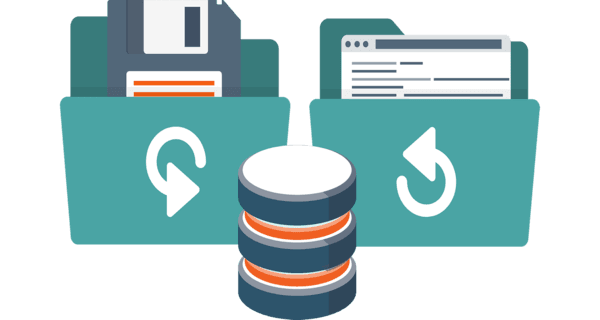Cutting-edge Saas Backup Tool Performance Evaluation
Organizations must overcome the crucial challenge of protecting their valuable information as digital data storage becomes more and more important. By offering safe and accessible storage for important data, cloud database backup offers a solution. In this article, we'll go over the significance and advantages of cloud database backup as well as the best methods for putting it into practice and effectively managing it.
- Recognizing Cloud Database Backup
Automated Cloud Endpoint Backup In 2024

The act of storing copies of your database online in a remote server or data center is known as cloud database backup. It offers an off-site backup option that guarantees data redundancy, hardware fail-safeness, natural disaster protection, and cyber threats.
- Cloud database backup benefits:
User-friendly Cloud Storage Vs Cloud Backup Disadvantages
Compared to conventional backup techniques, cloud database backup has a number of advantages. Among them are:
Data redundancy: By storing data across multiple servers, hardware failures and disasters are less likely to cause data loss.
Scalability: Depending on your needs, cloud backup makes it simple to scale up or down your storage requirements.
Accessibility: With cloud backup, any device with an internet connection can access your data whenever, wherever you want.
Cost-effectiveness: Cloud backup makes it unnecessary to spend money on expensive backup personnel, infrastructure, and maintenance.
Automated Backups: Cloud backup services frequently offer incremental and automated backups, which eliminate the need for manual labor.
Efficient Backup Solution For Small Office Performance Evaluation

- Selecting the best Cloud Database Backup Service:
Take into account the following when choosing a cloud database backup provider:
Scalable Online Backup Windows 11 Trends
- Security Measures: Make sure the service provider uses strong security measures like compliance certifications, access controls, and encryption.
- Reliability: Look for businesses that have a solid reputation for dependability and dependable uptime.
- Scalability: Verify that the service provider provides flexible storage options to meet your expanding data requirements.
For quick and effective data transfers, take into account the provider's network infrastructure and bandwidth capabilities.
- Using cloud database backup to implement:
High-performance Offsite Backup Server Case Studies
Use the following best practices see here now to implement cloud database backup:
- Define Backup Policies: Clearly specify your backup needs, including the frequency, retention, and recovery point goals.
- Encryption: To guarantee the confidentiality and integrity of your data, encrypt it before transferring it to the cloud.
- Regular Testing: Verify the veracity and thoroughness of your backups by regularly testing the restoration process.
Implement monitoring and alerting mechanisms to quickly identify problems or failures in the backup procedure.
Create a thorough disaster recovery plan that outlines the procedures for recovering data in the event of an emergency.
Modern Real Time Backup Comparison
- Cloud database backup management

Continuous monitoring and maintenance are necessary for managing cloud database backup. Think about the following advice:
Cutting-edge Cloud Vs Local Backup Efficiency Breakdown
- Regularly Monitor Backups: Keep an eye on the backup procedure to make sure it's finished successfully and quickly fix any mistakes or failures.
- Review and update backup policies on a regular basis to keep up with evolving regulations and business needs.
- Retention Management: Depending on legal requirements and business priorities, control how long your backups are kept.
Implement data archiving techniques to move infrequently accessed data to cost-effective storage tiers while maintaining accessibility.
Periodic Reviews: Review your cloud database backup strategy on a regular basis to spot areas for improvement and make sure it aligns with company objectives.
Messages to Remember:
Robust Backup Software For Multiple Computers Future Outlook
Data redundancy, scalability, accessibility, cost efficiency, and automated backups are just a few of the advantages of cloud database site here backup, which offers secure and accessible storage for important data.
- When selecting a provider, take security precautions into account, as well as dependability, speed of data transfer, and reliability.
Creating backup policies, encryption, regular testing, monitoring and alerting, and creating a disaster recovery plan are all steps in the implementation of cloud database backup.
Regular backup monitoring, backup policies updates, retention management, data archiving, and periodic reviews are all necessary for effective cloud database backup management.
Remember that protecting the sensitive data in your organization requires the implementation of a strong cloud database backup strategy. To guarantee data security, accessibility, and business continuity, embrace the power of cloud backup.
State-of-the-art Mac Server Strategies
Key Takeaways or a related term
Data redundancy and protection against hardware failures or disasters are both guaranteed by cloud database backup.
Scalability, accessibility, cost effectiveness, and automated backups are just a few of the advantages.
When selecting a provider, take security precautions into account, as well as dependability, speed of data transfer, and scalability.
- Adopt best practices like disaster recovery planning, encryption, regular testing, monitoring, and alerting.
Monitoring backups, updating policies, managing retention, putting data archiving into place, and conducting periodic reviews are all part of effective management.